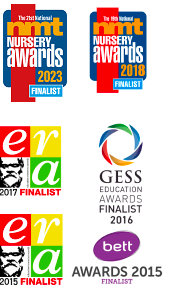Childcare settings are crucial environments where young minds are nurtured, developed, and encouraged to explore the world around them. These formative years play a significant role in shaping a child’s growth and future. To ensure the best possible outcomes for the children under their care, childcare providers should emphasise the importance of planning and observing.
Observation is how Early Years educators understand children’s interests, skills, behaviours, and developmental stages. By observing children during play or structured activities, practitioners can identify their strengths and areas that need improvement.
Observations help practitioners to understand each child’s unique needs and abilities better. This can help practitioners plan more effectively and make planning more targeted and personal for the children in an Early Years setting. Observations can be added to a platform such as eylog to enable both parents and childcare practitioners to add to the learning journey of each child and build a full picture of their development across a chosen framework, and beyond!
Planning is a way to ensure that children’s learning is effective, that they are making the required progress towards early learning goals, and is key to making learning exciting and progressive. It ensures all children have access to the same development opportunities and enjoy a balanced curriculum.
How does planning and assessment look in the early years setting?
Observations document how children are developing through listening to and looking at what they are learning through play and what they enjoy doing with the activities and experiences available to them.
Observations can look different depending on your setting, the activities that are taking place, the purpose of the observation, and even which children are being observed. Teach Early Years refers to six different types of observation including ones such as Magic Moments which are brief observations with the aim of capturing short moments like a child’s ‘first’ of something, and Narrative Observations that are extended written accounts of an activity.
PACEY also refers to these different types of observation in their document on child observations and learning journeys, going on to explain the elements of a good observation.
Whilst observations are sometimes referred to by different names, they often refer to similar (if not the same) processes. When making an observation a practitioner should assess the activity the child is undertaking and decide which type of observation works best for them and that child.
Observations also play an essential role in strengthening partnerships between Early Years settings and parents. Sharing observations with parents helps them understand their child’s experiences at nursery better while also providing them with insights into their child’s development. Parents appreciate being kept informed about what happens during the day through observation notes or photos shared by practitioners.
Planning can also provide a number of positives in Early Years settings, often being prompted by the observations captured in a setting. It gives routine and structure which we know is key for children’s development, allows for practitioners to manage their time and work effectively as a team and ultimately meet children’s needs so they can develop skills and knowledge through play.
Planning also highlights any areas where children may need additional support, time and attention, allowing for a targeted focus on areas of development. However, all planning should be flexible and allow for spontaneous activities and learning opportunities. Planning in an Early Years’ setting is very different from planning in later key stages, as it allows for much more freedom for child-led activities and outcomes than the later curricula allow for in a traditional 1:30 ratio classroom.
Areas may be set up with topics and themes for small-world play, introductions to writing via mark-making activities, and opportunities for communication and shared experiences, alongside options for children to select resources and choose independent games and exploratory projects of their own. This is why assessment also happens more informally through observations as there is no one-size-fits-all outcome for the range of ages and stages in an Early Years setting.
eylog enables childcare settings to move away from the restrictions of a paper-based learning journey by incorporating photos, videos and audio files. Practitioners can add multiple media to a single observation, enabling them to truly capture the story – be it those first steps, a pop star moment, or grasping a pencil – simplifying the process of recording such moments and assessing the progress of the child, all while eliminating the need for costly paper and ink solutions.
With eylog supporting a wide range of assessment frameworks in England, Scotland and Wales it enables you to focus and plan towards well-rounded learning and development for the children. The comprehensive sections allow staff to add activity analysis, assessments, next steps and notes to ensure a thorough observation.
The English frameworks include Development Matters, Birth to 5 Matters, Early Years Foundation Stage (EYFS), Early Learning Goals (ELG), Early Years Developmental Journal (EYDJ), Characteristics of Effective Learning (CoEL), Characteristics of Effective Teaching and Learning (CoETL), Every Child a Talker (ECaT), Leuven Scales, British Values, Phonics, Schemas and Montessori.
The Scottish frameworks are Curriculum for Excellence (CfE), Pre Birth to Three, Four Capacities and the Wellbeing Wheel.
The Welsh frameworks are Birth to Three Matters and Foundation Phase, and the Northern Ireland framework is the NI Curriculum.
Not only does eylog host a variety of predefined assessment frameworks, but settings also have the ability to add their own custom framework to the system if they feel it is more appropriate.
Conclusion
In a childcare setting, planning and observing are not just administrative tasks but fundamental pillars that support a child’s overall development.
Through personalized learning, nurturing environments, early identification of concerns, and improved parent-caregiver communication, planning and observing contribute significantly to the well-being and growth of every child.
By investing in these essential practices, childcare providers can lay the foundation for a brighter and more promising future for the children they serve.

